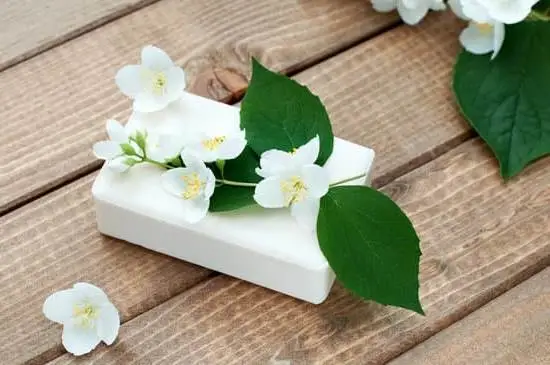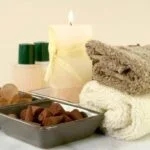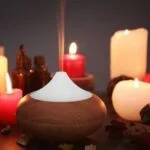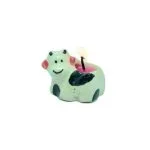Aromatherapy has become increasingly popular as a natural way to promote relaxation, improve mood, and even manage certain health conditions. Aromatherapy diffusers are an essential tool in this practice, allowing for the easy dispersal of essential oils into the air. In this article, we will delve into the science behind how aromatherapy diffusers work and explore the potential risks and toxicity associated with their use.
The use of aromatherapy dates back thousands of years and involves the use of essential oils derived from plants to enhance physical and mental wellbeing. Aromatherapy diffusers play a crucial role in this practice by vaporizing the essential oils and releasing them as a fine mist or aromatic steam. This allows for easier inhalation and absorption of the beneficial properties of the oils.
Understanding how aromatherapy diffusers work requires exploring the different types available, such as ultrasonic, nebulizing, heat, and evaporative diffusers. Each type operates differently and comes with its own set of benefits and drawbacks. Additionally, it is important to consider the quality and purity of essential oils used in aromatherapy diffusers, as well as safety precautions when using them to avoid potential risks and toxicity.
The Science Behind Aromatherapy Diffusers
Aromatherapy diffusers work by dispersing essential oils into the air, allowing people to inhale the aroma and potentially experience its therapeutic benefits. The process of how aromatherapy diffusers work involves breaking down the essential oils into smaller molecules that can be easily inhaled. There are a few different types of aromatherapy diffusers, each working in their own unique way to disperse the essential oils into the air.
Here are some common ways that aromatherapy diffusers work:
- Ultrasonic diffusers: These diffusers use ultrasonic vibrations to break down the essential oils into tiny particles, which are then released as a fine mist into the air.
- Nebulizing diffusers: This type of diffuser uses pressurized air or gas to break down the essential oils into a fine mist without using heat or water.
- Heat diffusers: These diffusers use heat to evaporate the essential oils and release their aroma into the air.
The science behind aromatherapy diffusers is based on the principles of aromatherapy, which posits that inhaling certain scents can affect mood, relaxation, and overall wellbeing. When using an aromatherapy diffuser, the essential oil molecules are inhaled and then travel through the nasal cavity to stimulate the olfactory system. This stimulation can have various effects on the body and mind, such as promoting relaxation, improving sleep quality, reducing stress, and enhancing mental clarity.
It’s important to note that while aromatherapy diffusers can offer potential benefits, there are also risks associated with their use. It’s crucial to understand how aromatherapy diffusers work toxic if used improperly or if certain precautions aren’t taken. In the following sections, we will explore both the benefits and potential risks of using aromatherapy diffusers, as well as safety precautions for using them responsibly.
Benefits of Aromatherapy Diffusers
Aromatherapy diffusers are not only a popular way to fill a room with a pleasant scent, but they also offer numerous benefits for overall health and wellbeing. The use of essential oils in aromatherapy diffusers can help alleviate stress, anxiety, and even improve sleep quality. When these essential oils are inhaled, they can have a direct impact on the limbic system in the brain, which is responsible for emotions and memories.
One of the key benefits of using aromatherapy diffusers is the ability to create a calming and relaxing environment. Certain essential oils, such as lavender and chamomile, have been shown to have sedative effects, making them ideal choices for promoting relaxation and better sleep. In addition, other essential oils like peppermint and eucalyptus can help clear sinuses and ease headaches when diffused into the air.
Furthermore, aromatherapy diffusers can also act as natural air purifiers by releasing antimicrobial properties into the air. Certain essential oils have been found to help combat bacteria, fungi, and mold when dispersed through a diffuser. This not only helps cleanse the air within a space but also creates a more pleasant and healthy environment overall.
In summary, the benefits of using aromatherapy diffusers are vast and varied. From promoting relaxation and better sleep to purifying the air we breathe, these devices offer tangible benefits for both physical and mental health. Understanding how aromatherapy diffusers work toxic means being aware of their potential risks while also recognizing their potential to positively impact our lives.
Different Types of Aromatherapy Diffusers
Aromatherapy diffusers come in various types, each with its own unique way of dispersing essential oils into the air. Here are some of the most common types of aromatherapy diffusers:
- Nebulizing Diffusers: These diffusers do not require water or heat to disperse essential oils. They work by using pressurized air to create a fine mist of oil particles that are released into the air.
- Ultrasonic Diffusers: Ultrasonic diffusers use electronic frequencies to create vibrations in water, which causes the essential oils to disperse as a fine mist into the air. These diffusers also act as humidifiers, adding moisture to the air.
- Evaporative Diffusers: This type of diffuser uses a fan to blow air through a pad or filter containing essential oils. As the air passes through the pad, it picks up the oil particles and disperses them into the surrounding environment.
- Heat Diffusers: Heat diffusers use heat, usually from a candle or electric heating element, to gently warm and vaporize the essential oils. The aroma is then released into the air.
It’s important to consider the pros and cons of each type of aromatherapy diffuser before making a purchase. Factors such as ease of use, maintenance, and safety should be taken into account when choosing the right type for your needs. Additionally, some people may prefer one type over another based on personal preference and desired aroma intensity.
When considering different types of aromatherapy diffusers, it’s important to be aware of any potential risks and toxicity associated with their use. Understanding how aromatherapy diffusers work can help users make informed decisions about their usage and ensure they are using them safely and effectively for their intended purposes.
Essential Oils and Their Role in Aromatherapy Diffusers
Aromatherapy diffusers are devices that disperse essential oils into the air, allowing for easy inhalation of the therapeutic aroma. Essential oils are natural extracts from plants that have been used for their medicinal and aromatic properties for centuries. When used in aromatherapy diffusers, these oils can have a variety of benefits, including stress relief, improved sleep, and mood enhancement.
The Role of Essential Oils
Essential oils play a crucial role in aromatherapy diffusers as they are the main components that create the desired therapeutic effects. Each essential oil has its own unique properties and benefits. For example, lavender oil is known for its calming effects, while peppermint oil is often used for its energizing and uplifting properties. When these oils are dispersed through a diffuser, they can have a powerful impact on both physical and emotional well-being.
How Aromatherapy Diffusers Work
Aromatherapy diffusers work by breaking down the essential oil into small molecules and dispersing them into the air as a fine mist. This allows the aroma to be easily inhaled and absorbed by the body. Different types of diffusers use different mechanisms to achieve this, such as ultrasonic vibrations, heat, or airflow. The chosen method can affect the potency and longevity of the aroma as well as the overall effectiveness of the diffuser.
Potential Risks and Toxicity
While essential oils offer many benefits, it’s important to be aware of potential risks when using aromatherapy diffusers. In some cases, certain essential oils can be toxic if ingested or used improperly. Additionally, some individuals may experience allergic reactions or sensitivities to specific oils. It’s important to research each essential oil thoroughly before use and consult with a healthcare professional if there are any concerns about potential toxicity or adverse reactions.
Potential Risks and Toxicity of Aromatherapy Diffusers
When it comes to using aromatherapy diffusers, it’s important to be mindful of the potential risks and toxicity associated with them. While aromatherapy can offer numerous benefits for mental and physical well-being, there are also some precautions to consider to ensure safe use of these devices.
Essential Oil Toxicity
One potential risk of using aromatherapy diffusers is the potential for essential oil toxicity. Essential oils are highly concentrated plant extracts that can have powerful effects when inhaled or applied to the skin.
However, if used in excessive amounts or if certain oils are used improperly, they can cause adverse reactions such as skin irritation, respiratory issues, or even poisoning. It’s crucial to research and understand the proper usage and dilution ratios for each essential oil before using them in a diffuser.
Air Quality Concerns
Another consideration when using aromatherapy diffusers is the impact on indoor air quality. Some individuals may be sensitive to certain scents or particles released by essential oils when diffused into the air. This can lead to symptoms such as headaches, dizziness, or nausea. To mitigate this risk, it’s recommended to use high-quality essential oils and ensure adequate ventilation in the space where the diffuser is being used.
Potential Fire Hazards
Certain types of aromatherapy diffusers, particularly those that use heat or open flames, can pose a fire hazard if not used properly. It’s important to follow manufacturer instructions for safe operation and placement of these devices to minimize the risk of accidental fires. Additionally, keeping flammable materials away from the area where the diffuser is in use will further reduce the risk of fire hazards.
By understanding these potential risks and taking necessary safety precautions, individuals can continue to enjoy the benefits of aromatherapy while minimizing any potential negative impacts on health and wellbeing.
Safety Precautions When Using Aromatherapy Diffusers
Aromatherapy diffusers are a popular way to enjoy the benefits of essential oils, but it’s important to use them safely to avoid potential risks and toxicity. When using aromatherapy diffusers, there are several safety precautions that should be taken into consideration.
One important safety precaution when using aromatherapy diffusers is to always follow the manufacturer’s instructions. Different types of diffusers may have specific guidelines for safe use, such as the amount of essential oil to be used or how long the diffuser should run. By following these instructions, you can ensure that you are using the diffuser in a safe and effective manner.
It’s also crucial to choose high-quality essential oils that are free from synthetic additives or contaminants. Using low-quality or adulterated oils can increase the risk of toxicity when used in an aromatherapy diffuser. Always purchase essential oils from reputable sources and look for products that are labeled as pure and natural.
Additionally, make sure to keep your aromatherapy diffuser clean and well-maintained. Regularly cleaning the device will prevent the build-up of mold, bacteria, and other contaminants that could pose health risks when dispersed into the air. Following these safety precautions will help you enjoy the benefits of aromatherapy without exposing yourself to unnecessary risks.
| Safety Precautions | Importance |
|---|---|
| Follow manufacturer’s instructions | Ensure safe and effective use |
| Choose high-quality essential oils | Minimize risk of toxicity |
| Clean and maintain the diffuser | Prevent build-up of contaminants |
Tips for Choosing and Using Aromatherapy Diffusers Safely
When it comes to using aromatherapy diffusers, safety should always be a top priority. It’s important to understand how these devices work and how they can potentially pose risks if not used properly. Aromatherapy diffusers work by dispersing essential oils into the air, allowing for their aromatic and therapeutic benefits to be inhaled. However, if used incorrectly or with certain types of essential oils, they can also release toxic substances into the air.
To use aromatherapy diffusers safely, it’s crucial to choose the right type of diffuser for your needs. There are various types of diffusers available, including ultrasonic, nebulizing, evaporative, and heat diffusers. Each type has its own set of benefits and drawbacks, so it’s important to do your research and select the one that aligns with your preferences and safety concerns.
In addition to choosing the right type of diffuser, it’s also essential to use high-quality essential oils that are safe for inhalation. Some essential oils can be toxic when dispersed into the air, especially if used in high concentrations or by individuals who may have sensitivities or allergies.
Always read the labels on essential oil bottles and follow guidelines for proper dilution when using them in your aromatherapy diffuser. By being mindful of the potential toxicity of certain essential oils and following safety precautions, you can enjoy the benefits of aromatherapy without putting your health at risk.
Conclusion
In conclusion, aromatherapy diffusers have gained popularity for their potential to improve health and wellbeing through the use of essential oils. Understanding how aromatherapy diffusers work is essential for maximizing their benefits and reducing potential risks. The science behind these devices lies in the dispersion of essential oil particles into the air, which can then be inhaled or absorbed by the body. This method allows for the therapeutic properties of the oils to positively impact physical, mental, and emotional health.
The benefits of aromatherapy diffusers are numerous, ranging from stress reduction and improved sleep to enhanced mood and concentration. Different types of diffusers offer flexibility in choosing the most suitable option based on individual preferences and needs. However, it is important to note that there are potential risks and toxicity associated with the improper use of aromatherapy diffusers. Certain essential oils can be harmful if used at high concentrations or by individuals with specific health conditions.
To ensure the safe use of aromatherapy diffusers, it is crucial to follow safety precautions such as diluting essential oils, avoiding prolonged exposure, and choosing reputable brands. When using a diffuser at home or in other settings, it is recommended to educate oneself about potential hazards and consult with a healthcare professional if necessary. By understanding how aromatherapy diffusers work and taking appropriate measures to mitigate potential risks, individuals can enjoy the therapeutic benefits while safeguarding their health and wellbeing.
Frequently Asked Questions
Do Diffusers Have Harmful Chemicals?
Diffusers do not inherently have harmful chemicals, but the essential oils used in them can vary in quality. Some cheaper or synthetic oils may contain harmful chemicals, so it’s important to use high-quality, pure essential oils.
Are Essential Oils Toxic When Diffused?
Essential oils can be toxic when diffused if they are not used properly. Some oils can be harmful to pets, children, or individuals with certain medical conditions. It’s crucial to research and use essential oils responsibly.
Is Aromatherapy Diffuser Safe?
Aromatherapy diffusers are generally safe when used according to the manufacturer’s instructions and with high-quality essential oils. However, it’s important to be aware of any potential risks or contraindications for specific oils and to practice proper dilution and ventilation techniques for safe usage.

Are you looking for a natural way to improve your health and wellbeing?
If so, aromatherapy may be the answer for you.





